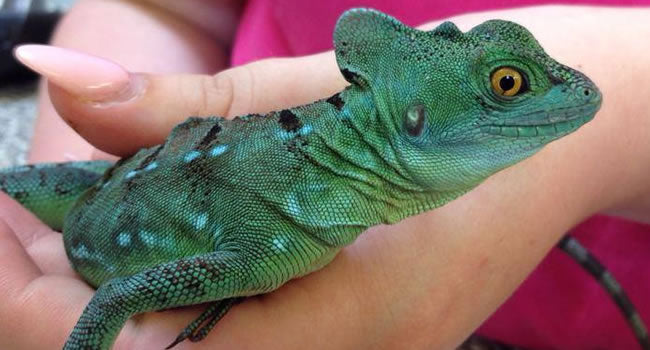Choosing the Right Reptile Breed for Your Way Of Living and Space
Picking the ideal reptile breed to incorporate into your home involves a thoughtful factor to consider of various factors (Reptiles for sale). From the dimension of your home to the quantity of time you can dedicate to their care, each aspect plays a crucial function in determining the most appropriate reptile buddy for you. By making an informed choice that lines up with both your way of life and offered room, you can establish a harmonious environment for both yourself and your scaly buddy
Aspects to Think About Before Picking
Prior to choosing a reptile breed, it is important to carefully think about numerous crucial elements to make sure the ideal match for both the animal and the proprietor. One critical factor to ponder is the size of the reptile. Various species vary substantially in dimension, varying from little geckos to large snakes. It is crucial to choose a reptile whose dimension straightens with the space offered in your house to give ample room for the pet dog to prosper. Additionally, consider the reptile's life expectancy, as some species can live for several decades, requiring a long-term commitment from the owner.
Some reptiles, such as certain species of turtles, have complicated care requirements involving particular diets, illumination, and habitat needs. Furthermore, aspect in the reptile's personality and handling requirements. Recognizing these aspects will aid you make an informed decision when picking a reptile breed.
Small Reptile Breeds for Compact Spaces

Reptiles Suitable for Busy Lifestyles
These tiny reptiles are simple to care for, calling for an easy diet plan of pests and marginal room upkeep. These reptiles have hearty appetites and can grow on a diet regimen of veggies and pests. Generally, selecting a reptile that fits well with a hectic way of living can give the happiness of pet ownership without overwhelming everyday commitments.

Low-Maintenance Reptile Types
Among the different reptile types offered, some attract attention for their low-maintenance needs, making them optimal choices for people with busy schedules. One such type is the Leopard Gecko. These small, nocturnal animals are relatively simple to care for, needing an easy enclosure with a warmth resource, a shallow water meal, and a diet plan of pests. Leopard Geckos do not need special illumination and can thrive on a diet regimen of readily available pests like crickets and mealworms.
An additional low-maintenance reptile breed is the Kenyan Sand Boa. These snakes are known for their accommodating nature and do not require frequent handling. They have moderate room needs and feed on little rats, usually consuming when each to 2 weeks. Kenyan Sand Boas are delving snakes, so supplying them with a suitable substrate for excavating is necessary for their wellness.
Last But Not Least, Corn Snakes are preferred for their vibrant shade patterns and convenience of treatment - Reptiles for sale. They have simple nutritional requirements, primarily consuming mice or rats, and are typically sturdy, making them an excellent option for beginners seeking a low-maintenance reptile companion
Reptiles for Sizable Environments
For reptile owners seeking to supply sufficient room for their pets to prosper in, specific types are specifically appropriate to roomy atmospheres. Large reptiles such as the Environment-friendly Iguana and the Argentine check it out Black and White Tegu call for roomy units to accommodate their dimension and all-natural actions. Green Iguanas, understood for their arboreal nature, need tall rooms with branches for climbing up, while Argentine Tegus, earthbound reptiles, take advantage of units with ample floor room for roaming and excavating.
Display lizards, such as the Nile Monitor and the Savannah Display, are likewise ideal for roomy atmospheres as a result of their active and explorative nature. These smart reptiles need large units with diverse surface for psychological excitement and physical workout. The Nile Monitor, in certain, is an effective swimmer and needs to have access to a water attribute within its unit.
Furthermore, huge serpent breeds like the Burmese Python YOURURL.com and the Boa Constrictor flourish in spacious habitats that permit for adequate movement and exercise. Enclosures for these serpents ought to be large and long adequate to accommodate their adult size, with secure hiding spots for comfort and safety.
Verdict
To conclude, picking the appropriate reptile type for your lifestyle and living space calls for careful consideration of elements such as size, task level, and maintenance requirements. Small reptile types are suitable for compact spaces, while low-maintenance reptiles are appropriate for active individuals. For those with spacious environments, bigger reptile breeds might be better. By taking these elements right into account, you can ensure that you pick a reptile that fits effortlessly into your life and home.
Picking the perfect reptile type to integrate right into your living area entails a thoughtful consideration of different elements.When thinking about little reptile breeds for small rooms, it is important to focus on varieties that can grow in minimal living environments. By picking little reptile breeds that are appropriate to living in small spaces, you can enjoy the friendship of a reptile without compromising their wellness.
In verdict, picking the suitable reptile breed for your way of living and living room needs mindful consideration of variables such as size, task degree, and read review upkeep needs. Small reptile breeds are suitable for small spaces, while low-maintenance reptiles are suitable for active individuals.